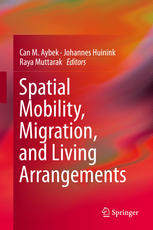

Most ebook files are in PDF format, so you can easily read them using various software such as Foxit Reader or directly on the Google Chrome browser.
Some ebook files are released by publishers in other formats such as .awz, .mobi, .epub, .fb2, etc. You may need to install specific software to read these formats on mobile/PC, such as Calibre.
Please read the tutorial at this link: https://ebookbell.com/faq
We offer FREE conversion to the popular formats you request; however, this may take some time. Therefore, right after payment, please email us, and we will try to provide the service as quickly as possible.
For some exceptional file formats or broken links (if any), please refrain from opening any disputes. Instead, email us first, and we will try to assist within a maximum of 6 hours.
EbookBell Team

5.0
110 reviewsThis book brings together ten original empirical works focusing on the influence of various types of spatial mobility – be it international or national– on partnership, family and work life. The contributions cover a range of important topics which focus on understanding how spatial mobility is related to familial relationships and life course transitions. The volume offers new insights by bringing together the state of the art in theoretical and empirical approaches from spatial mobility and international migration research. This includes, for example, studies that investigate the relationships between international migration and changing patterns of partnership choice, family formation and fertility. Complementing to this, this volume presents new empirical studies on job-related residential mobility and its impact on the relationship quality of couples, family life, and union dissolution. It also highlights the importance of research that looks at the reciprocal relationships between mobility and life course events such as young adults leaving the parental home in international migration context, re-arrangements of family life after divorce and spatial mobility of the elderly following life transitions. The scholarly work included in this volume does not only contribute to theoretical debates but also provide timely empirical evidence from various societies which represent the common features in the dynamics of spatial mobility and migration.